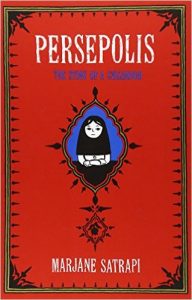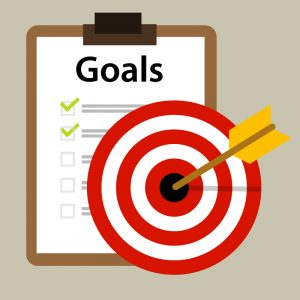
When I’ve asked students who identify as non-readers to recount a happy school-related memory, more often than not, they return to somewhere in elementary school. Most were happy because they knew what they were doing, and when they didn’t, someone explicitly told them what to do.
That changes by high school. At that point, we assume that they “know better.” But the truth is the same: kids don’t know what they don’t know.
So, how can we help these high school students, who may require more explicit skill instruction?
Earlier this year, the General Education Leadership Network published a handbook of “Essential Practices in Early and Elementary Literacy.” Though the document focuses on early literacy, it includes three practices that can establish equity and support for secondary readers and writers as well.
1. “Provisions of abundant reading material in the classroom”
As reading teachers, we must create spaces dripping with literacy. It’s in reading widely that a reader truly grows.
At the elementary level, this might look like readers’ workshops and students’ regularly “book shopping.” At the secondary level, this might look like daily independent reading and encouraging students to read appropriately leveled texts for pleasure.
In both scenarios, the key comes down to choice.
The idea of choice tends to drift off as students leave elementary school, and as class-wide texts become the bread and butter of ELA courses. Yet by incorporating independent, student-selected, teacher-approved texts, many of our resistant readers begin to feel a sense of empowerment.
2. “Intentional and ambitious efforts to build vocabulary and content knowledge”
Many high school students arrive with a rich bank of academic vocabulary to draw from, while some do not. Many may require explicit instruction on domain-specific vocabulary in order to access the content.
Here are some ways to instruct vocabulary:
- Read alouds and modeling how to think about complex vocabulary works at all levels.
- Concept of Definition maps can help students to see how a word is connected to others.
- Vocabulary Word Maps scaffold the meaning of the vocabulary in a visual way.
- Concept Ladders introduce critical unit concepts and scaffold nuanced thinking.
As students work through vocabulary strategies, the Essential Practices in Early and Elementary Literacy see the value in encouraging “talk among children while learning and reading.” Talk allows for processing time and prompts students to use the vocabulary in a disciplinary context.
3. “Activities that build reading fluency and stamina with increasingly complex text”
In my work as a literacy interventionist, I see students struggle with complex texts on the daily. But I have noticed that when reading is a shared task, students are more willing to dive into this challenging work.
At the elementary level, this may look like paired reading. At the secondary level, the needs often move beyond fluency and into comprehension. That’s why a strategy like reciprocal teaching works well when students read collaboratively. In this strategy, students are assigned roles to model effective thinking moves.
Another way to build stamina with challenging texts is by using other text types as supplements. Students will define reading by what we assign to them. Suddenly, a challenging and irrelevant text from the canon represents all of reading, and may feel unreachable to a struggling reader. But by exposing students to multiple genres and text types, alongside a more challenging text, we breathe relevance and resonance into what students may perceive to be beyond their grasp.
Teaching multimodal texts is an effective way to build understanding, particularly for students with weak literacy skills. Multimodal options encourage students to read about the same idea, but in a more relevant way. And after all, increasing relevance breathes life into learning, and positions even resistant readers to be lifelong readers.
 Lauren Nizol (@CoachNizol) is an MTSS Student Support Coach and Interventionist at Novi High School. She has eleven years of classroom experience, teaching English, IB Theory of Knowledge and English Lab. Lauren completed her undergraduate degree in History, English and Secondary Education at the University of Michigan-Dearborn and her Masters in English Education from Eastern Michigan University. She is a National Writing Project Teacher Consultant with the Eastern Michigan Writing Project and an advocate for underperforming students and literacy interventions. When she’s not teaching, Lauren often runs for the woods with her husband and their three sons/Jedi in training and posts many stylized pictures of trees on Instagram.
Lauren Nizol (@CoachNizol) is an MTSS Student Support Coach and Interventionist at Novi High School. She has eleven years of classroom experience, teaching English, IB Theory of Knowledge and English Lab. Lauren completed her undergraduate degree in History, English and Secondary Education at the University of Michigan-Dearborn and her Masters in English Education from Eastern Michigan University. She is a National Writing Project Teacher Consultant with the Eastern Michigan Writing Project and an advocate for underperforming students and literacy interventions. When she’s not teaching, Lauren often runs for the woods with her husband and their three sons/Jedi in training and posts many stylized pictures of trees on Instagram.

 This summer, my Theory of Knowledge students will read two independent books in preparation for the second semester of the course. Down the hall, my colleague Hattie (you know her from her
This summer, my Theory of Knowledge students will read two independent books in preparation for the second semester of the course. Down the hall, my colleague Hattie (you know her from her  The Comic Book Flood
The Comic Book Flood
 At my school, we had a reading goal of 20 books a year for each student. This goal was further broken down into page goals for grade levels — 400 pages each month for 6th graders, 500 for 7th graders, and 600 for 8th graders.
At my school, we had a reading goal of 20 books a year for each student. This goal was further broken down into page goals for grade levels — 400 pages each month for 6th graders, 500 for 7th graders, and 600 for 8th graders. As we continued, for many it was easy to double the two-week goal. For others who struggled to meet their goals, the common theme was that they didn’t make time to read daily. So we used a daily reading log, a visual tool that allowed students to see their amount of reading.
As we continued, for many it was easy to double the two-week goal. For others who struggled to meet their goals, the common theme was that they didn’t make time to read daily. So we used a daily reading log, a visual tool that allowed students to see their amount of reading. Amy Gurney is an 8th grade Language Arts teacher for Bloomfield Hills School District. She was a facilitator for the release of the
Amy Gurney is an 8th grade Language Arts teacher for Bloomfield Hills School District. She was a facilitator for the release of the  It’s that time of year here in Michigan: the dreaded standardized testing window we now call M-STEP. My 5th graders just endured five days of this testing over a two-week period. The first two days were ELA tests–hours of online reading and writing. Needless to say, after the second afternoon my kiddos were in need of a break.
It’s that time of year here in Michigan: the dreaded standardized testing window we now call M-STEP. My 5th graders just endured five days of this testing over a two-week period. The first two days were ELA tests–hours of online reading and writing. Needless to say, after the second afternoon my kiddos were in need of a break. This day really got me thinking about workshop and curriculum. We power through what we need to teach: mini lessons, teaching points, big ideas. We give kids lots of independent practice within the unit we are teaching.
This day really got me thinking about workshop and curriculum. We power through what we need to teach: mini lessons, teaching points, big ideas. We give kids lots of independent practice within the unit we are teaching. Beth Rogers is a fifth grade teacher for
Beth Rogers is a fifth grade teacher for